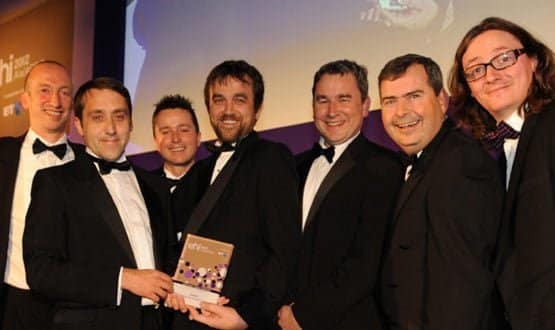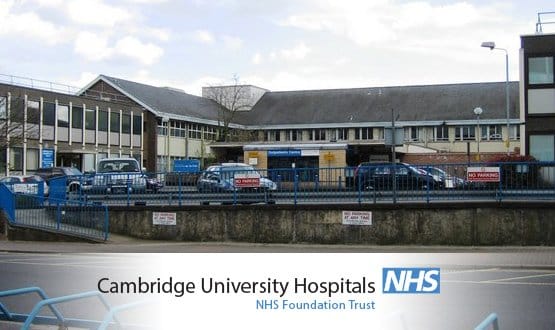Rikki-Tikki-data
- 26 March 2013

Ask any clinician to name the biggest challenge that they would like IT to address and their response is likely to be: how to find critical patient data quickly when they need it.
Despite advances in many areas of healthcare technology, a definitive solution for automatically categorising and searching different types of medical data has remained stubbornly elusive; not least because of the myriad, incompatible legacy systems typically found in hospitals nationwide.
“Unearthing a record from the terabytes of data trusts generate annually can be like looking for a needle in a medical haystack,” says Matthew Gittoes, managing director of search engine specialist Mongoose. “Unfortunately in healthcare, every little nugget of information – even a simple line in a report – can be critical for a treatment.”
Recognised as a leader in search technology (Mongoose supports the Financial Times’ archive search, among others), Mongoose first worked with the NHS on a project to create NHS Evidence (NICE’s clinical information resource). It has since worked with NHS Scotland, the NHS Information Centre, NHS Direct and several trusts.
“Without instant data at their fingertips, clinicians often spend more time preparing for consultations than they spend consulting,” says Gittoes. “What’s more, it can lead to unnecessary repeating of tests and treatments, conflicts in treatment and readmissions; not to mention dissatisfaction among younger staff and low adoption of IT systems.”
EDM not the only answer
Nor do electronic document management systems solve the data ‘findability’ problem, according to Gittoes. After investing vast amounts of time and money in digitising their records, he says trusts regularly discover that their clinicians still claim it’s easier to find information manually.
He says the problem is that correspondence and other information is typically stored in dozens of different places. This, coupled with the fact that many sources of medical data are unstructured, makes it very difficult for clinicians to pull together everything they need to know about an individual patient.
“With limited search capabilities and incomplete integration of disparate systems in most hospitals, EDM systems alone are inadequate in helping clinicians find patient data quickly and precisely,” he says. “Useful as they may be for digitising patient records, they seldom embed decent information retrieval capabilities.
“It’s easy enough to scan paper notes into a document management system, but it can’t then be easily searched, appropriately categorised or interrogated. It’s a complex challenge, so it’s hardly surprising that many clinicians feel the millions invested in digitisation haven’t yielded visible benefit.”
Collaborative solution
Such were the challenges still facing Mid Yorkshire Hospitals NHS Trust after implementing an EDM system and converting around 2m records to digital files. Serving a 25-mile corridor of the M62, the trust is a merger of three separate hospitals, so notes are required across several sites.
“Digitisation made sense for us,” says Paul Curley, clinical director for IT and a consultant surgeon. “But we needed to leverage our investment in scanning our paper records and to make sure clinicians have the utmost confidence in finding the information they need.
“By collaborating with Mongoose over several months, we successfully developed and piloted the powerful search tools and functionality to do just that. By enabling staff to find information quickly across multiple records, the resulting solution, HealthView, has greatly improved reliability of access to data to the benefit of our patients.”
HealthView has already attracted attention. In addition to winning the EHI Award, it has been recognised by Gartner, which made it the only non-US IT innovation to be recognised in its global ‘Cool Vendors in Healthcare Providers Report 2012.’
Bedside data
Gittoes claims the beauty of HealthView is that it does not replicate data, or try and act as a replacement for existing systems. It simply sits above existing IT – the trust’s patient administration system, electronic patient record, or legacy tools, for example.
However, it allows data to be presented in different ways. So, doctors and nurses can conduct specific searches on a patient’s healthcare background – for example, highlighting drug allergies that may have been mentioned in correspondence. They can also do this at the bedside, using iPads and other tablet devices.
“It’s invaluable, too, in the outpatient setting, where consent for a procedure is obtained on paper then scanned,” Curley says. “Previously, when a patient came in for their operation, time was wasted looking for that piece of paper. Now it’s as quick as doing a web search.”
Infrastructure cost, too, is minimised, he says. “We’re now using a moving window on a timeline. We look six weeks ahead and two weeks back for every patient who’s been exposed to our organisation. It puts the vast majority of required knowledge at our fingertips, with minimum storage requirement.”
‘Medical Google’
Curley believes the true value of HealthView is its ability to unlock hard-to-find data, add richness and thus realise the full potential of electronic records. “It is potentially the Holy Grail of searching structured and unstructured data simultaneously. This is one of those rare occasions where what is delivered really could transform what we do in hospitals.”
Since its initial implementation at Mid Yorkshire Hospitals, Gittoes says the solution has been adopted by several trusts and that it is attracting significant interest from university hospitals, research networks and pharmaceutical companies.
“Mongoose customers often call it a ‘medical Google’, but in truth it offers much more than traditional search technology. Our only problem is that the solution sounds almost too good to be true. Getting trusts to realise its true potential can be a bit like trying to sell jet airliner travel to the Victorians,” he concludes wryly.

The EHI Awards 2013 in association with CGI are now open for entries. For full details of this year’s categories, judging process and how to submit your entry please visit the dedicated awards website.
This year’s black tie awards dinner will be held at the prestigious Roundhouse in north London on 10 October. For information about sponsorship opportunities contact head of events Neil Hadland. Tickets will also be on sale soon.




